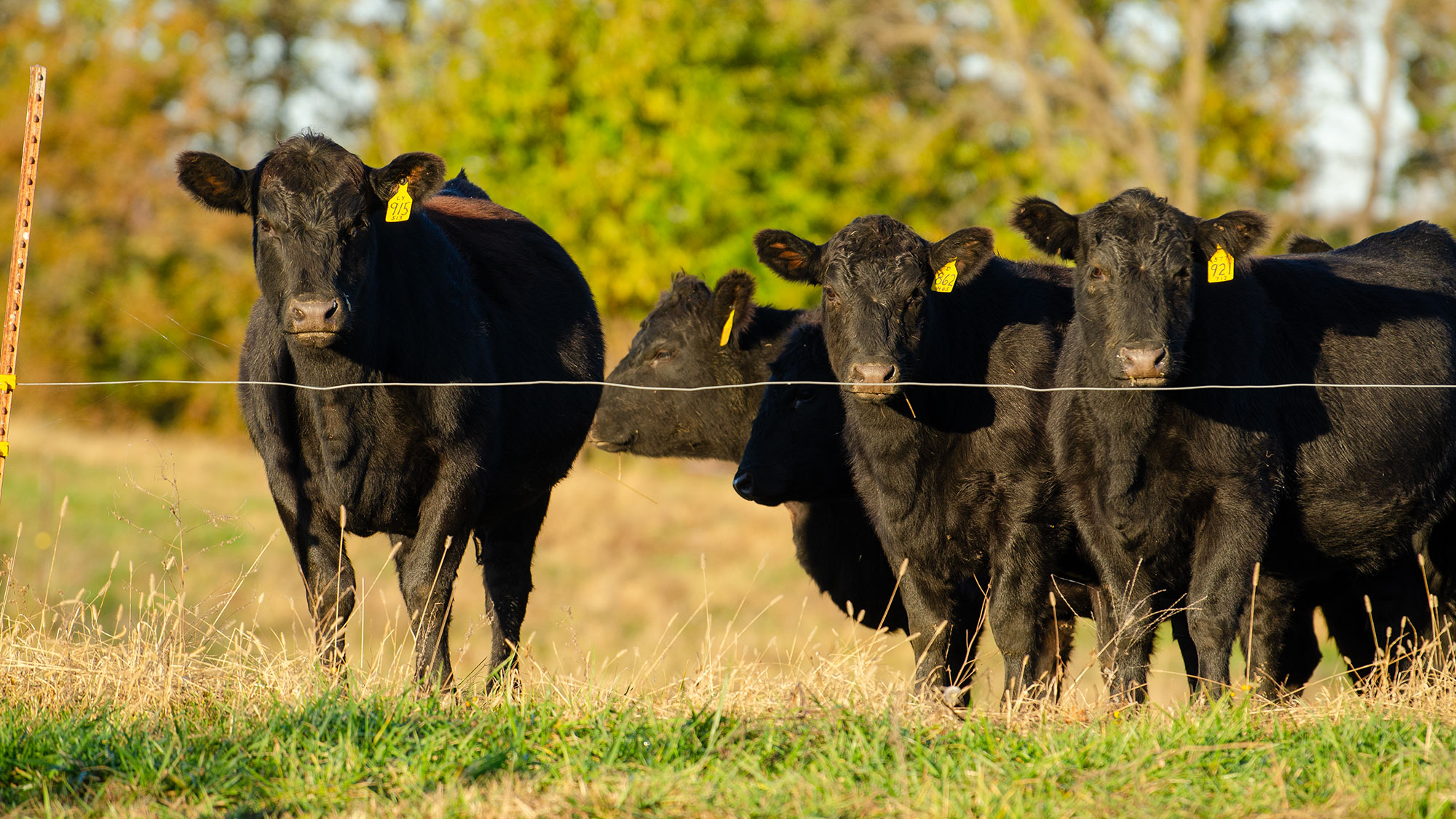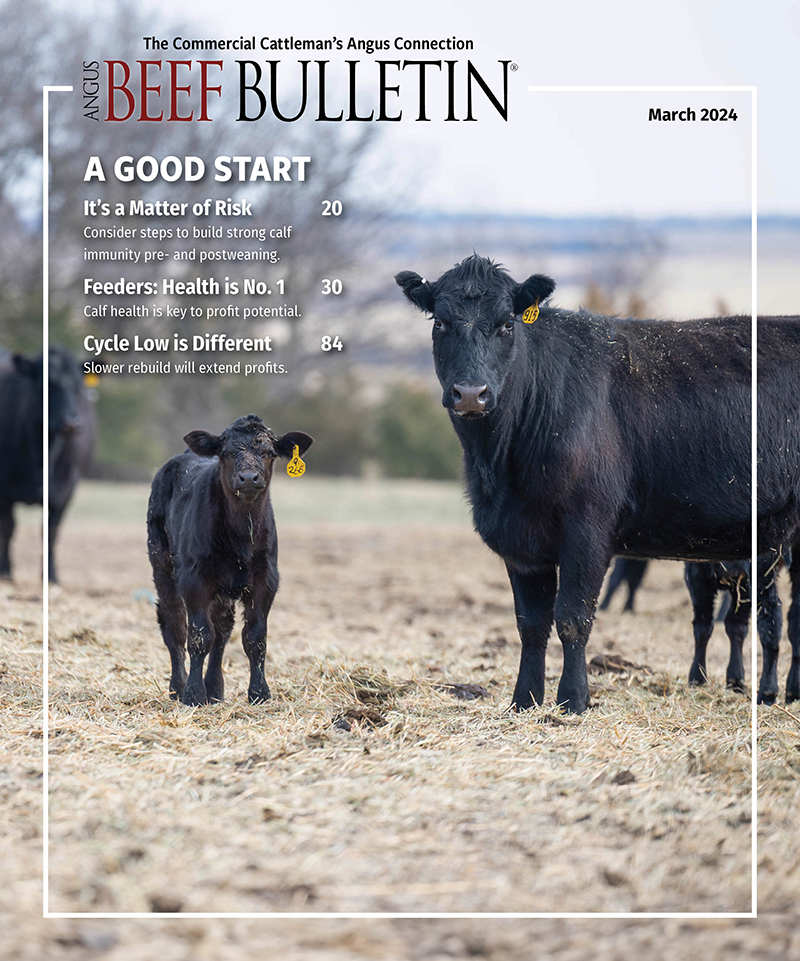
From the Field
Three regional managers share considerations for managing replacement heifers.
With bulls either already or soon-to-be purchased across the country, the other half of a successful operation now comes to the forefront: replacement females.
Managing replacement females can be a fine art and — depending on the area you operate within — producers may face unique challenges regarding maturity, nutrition or environmental adaptability. What questions do producers need to be asking, and what needs to carry the most weight when choosing replacements? We asked American Angus Association regional managers David Gazda, Adam Conover and Quanah Gardiner.
Your program
In order to successfully raise and market livestock, producers need to have a game plan. Part of that long-term planning should include herd goals, what your ideal replacement female looks like visually and performance-wise, as well as how you plan to manage your herd.
“You need to identify cattle from a maturity standpoint that are going to fit your environment and management,” says David Gazda, regional manager for Region 2. “Utlilize dam production records and select early-born heifers that will conceive on the front end of the breeding season. You can select too far to either end of the spectrum. It’s important to identify those cattle that most closely fit your management scheme and feed resources.”
As far as developing replacements, producers have to find a happy medium, notes Gazda. Cattle need to be on a plane of nutrition that allows them to express their genetic potential, cycle and breed at 13-15 months of age without adversely affecting reproduction or milking ability due to being overly conditioned.
Gazda also advises producers to find the best blend of traits when considering their environment, as well as the selection criteria they’ve established as a priority.
“Select good cattle that match your production goals from an EPD (expected progeny difference) profile, from a mature cow size standpoint and from a pedigree standpoint,” he says, with one additional thought. “Pull all those things together to select cows that will help you reach your production goals and marketing objectives.”
Importance of nutrition
There are a few nonnegotiables when it comes to managing replacement females. Prebreeding vaccinations, clean water and adequate nutrition all play a part.
A good mineral program is a piece of the puzzle. While researching can be a challenge, some realiable information might be available in your own backyard from your neighbors.
“There are lots of good [mineral] options out there, but you need to find what works well within your operation,” says Adam Conover, regional manager for Region 5, noting that producers should hesitate to only provide cattle with salt vs. a balanced mineral. “When all those things are right, then it becomes more of a calorie game.”
It’s been well-documented the first function to shut down when cattle are lacking in nutrition is reproduction. While it costs money to feed cattle, it’s necessary to ensure replacement females have enough energy to maintain condition and remain productive.
Use the entire toolbox
With the plethora of data gathered from EPD analysis and genomic testing available to cattlemen, there is a world of opportunity at their fingertips. But for individuals looking to make their next genetic investment, developing a good relationship with your seedstock provider can make all the difference.
After all, a seedstock producer can help you identify your goals and find animals that will push your operation in the direction of your primary objective.
“When we purchase bulls, we want to know EPDs, we want to know pedigrees and we want to gather as much information about that animal as possible,” says Quanah Gardiner, regional manager for Region 12. “Replacement heifers and commercial cattle should be no different.”
In a world where we may want cattle to be both attractive and productive, taking advantage of genomic testing, EPDs or data gathered from processors allows producers to see which selection criteria are working for them.
By utilizing these resources, your investment in Angus genetics will have the best possible influence on the herd well into the future.
Editor’s note: “From the Field” is a regular Angus Beef Bulletin EXTRA column featuring advice, industry news and Angus updates from regional managers of the American Angus Association. For information on how to contact your regional manager, please visit https://www.angus.org/assoc/RM.[Lead photo by Shauna Hermel.]



